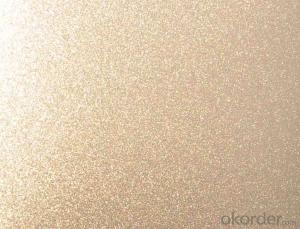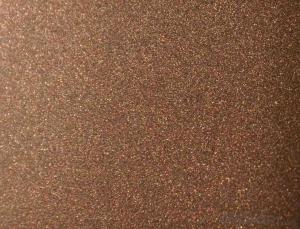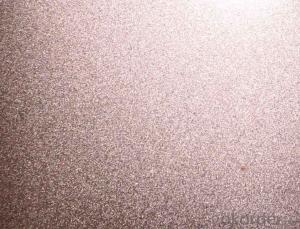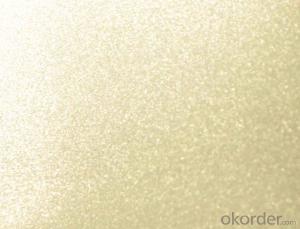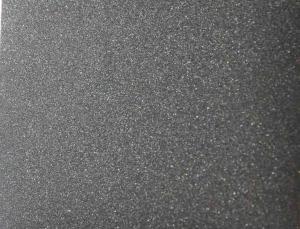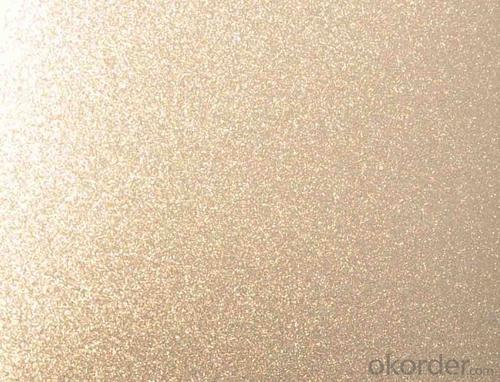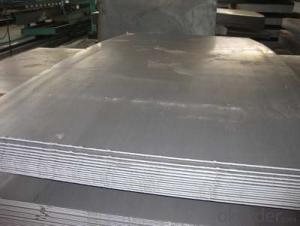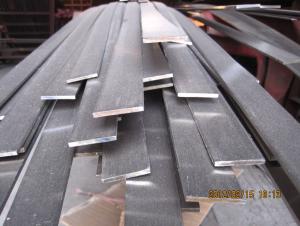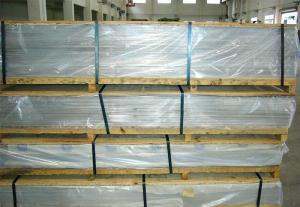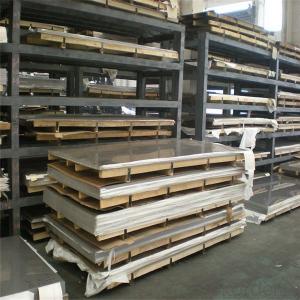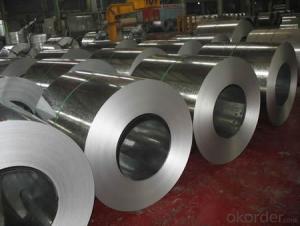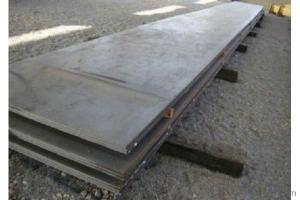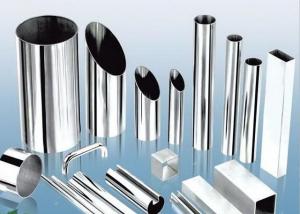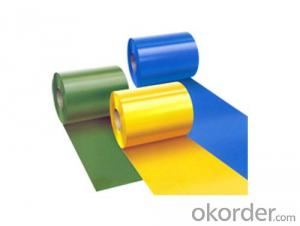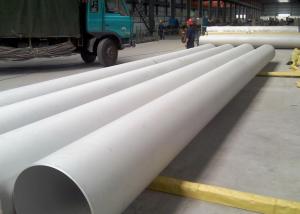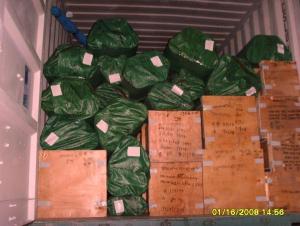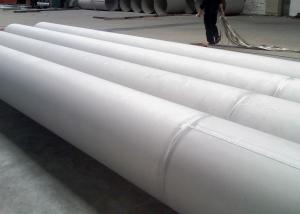Bead Blasted Series
- Loading Port:
- China Main Port
- Payment Terms:
- TT OR LC
- Min Order Qty:
- -
- Supply Capability:
- -
OKorder Service Pledge
OKorder Financial Service
You Might Also Like
Bead Blasted Series
Material:SUS304 SUS430 SUS316
Specification:1219mm*2438mm
Thickness:0.7mm-3.0m
Finish:BA,2B,Mirror
Other Specification:
Special sizes can be supplied by customers’ requests
Product Characteristic:
We imported an automatic bead blast production line and particular parameter, ensuring the sheets even and present pearl silver luster. let the bead blasted sheet be a high quality and wild range use of new building material.
Application:
Elevator,Architectural Decoration,Subway Station,Public Utility,Electrical Equipment.
- Q: Are stainless steel sheets resistant to chlorine?
- Yes, stainless steel sheets are highly resistant to chlorine due to the passive film formed on their surface, which helps protect them from corrosion caused by chlorine exposure.
- Q: What are the different types of stainless steel sheet surface coatings for outdoor applications?
- Outdoor applications commonly use various types of stainless steel sheet surface coatings. These coatings aim to enhance the stainless steel's durability and corrosion resistance, making it suitable for harsh outdoor environments. One commonly used coating for outdoor applications is powder coating. This involves applying a dry powder to the stainless steel surface and then curing it under heat to create a protective layer. Powder coating offers excellent resistance against corrosion, UV rays, and chemicals, making it perfect for outdoor use. Furthermore, it provides a wide range of color options, allowing for customization and aesthetic appeal. Another type of coating frequently employed for outdoor applications is PVD (Physical Vapor Deposition) coating. This process entails depositing a thin film of material onto the stainless steel surface using a vacuum chamber. PVD coatings offer outstanding adhesion, wear resistance, and corrosion resistance, making them suitable for outdoor use. They also provide various decorative finishes like gold, bronze, or black, which can enhance the stainless steel's appearance. In addition, stainless steel can be coated with ceramic for outdoor applications. Ceramic coatings are typically applied using a high-temperature spray process, resulting in a hard, protective layer on the stainless steel surface. These coatings offer superior resistance against abrasion, chemicals, and UV rays, making them ideal for highly durable outdoor applications. To summarize, stainless steel sheet surface coatings for outdoor applications include powder coating, PVD coatings, and ceramic coatings. Each of these coatings offers distinct benefits in terms of corrosion resistance, durability, and aesthetic appeal, enabling the use of stainless steel in a wide range of outdoor environments.
- Q: Are stainless steel sheets suitable for wastewater treatment plants?
- Stainless steel sheets, indeed, prove to be a suitable option for wastewater treatment plants. Renowned for its resistance to corrosion, stainless steel emerges as an optimal selection for environments characterized by excessive moisture and chemical exposure, such as wastewater treatment plants. The material exhibits an ability to endure harsh conditions and guarantee long-lasting durability. Moreover, stainless steel's ease of cleaning and maintenance proves to be crucial in a wastewater treatment facility where cleanliness and hygiene take center stage. The material's high strength-to-weight ratio further enhances its suitability for a range of applications within the plant, including tanks, piping, and equipment. All in all, stainless steel sheets undoubtedly stand as a dependable and pragmatic choice for wastewater treatment plants.
- Q: What are the benefits of using perforated stainless steel sheets in acoustics?
- Perforated stainless steel sheets offer several benefits when it comes to acoustics. Firstly, they provide excellent sound absorption properties. The evenly distributed perforations in the stainless steel sheets help to break up and scatter sound waves, reducing their energy and preventing them from bouncing back into the room. This helps to minimize echo and reverberation, resulting in a more comfortable and intelligible acoustic environment. Additionally, perforated stainless steel sheets can be customized to meet specific acoustic requirements. The size, shape, and pattern of the perforations can be adjusted to achieve different levels of sound absorption. This allows for precise control over the acoustics of a space, making it suitable for a variety of applications such as concert halls, recording studios, theaters, or even office spaces. Furthermore, perforated stainless steel sheets are durable and long-lasting. Stainless steel is known for its corrosion resistance, which means that the sheets can withstand harsh environments without deteriorating over time. This makes them suitable for both indoor and outdoor applications, ensuring a consistent acoustic performance for years to come. Another advantage of using perforated stainless steel sheets is their aesthetic appeal. The perforations can be designed in various patterns and sizes, offering a visually pleasing and modern look. This makes them a popular choice for architectural and design applications, where both acoustics and aesthetics are important. In summary, the benefits of using perforated stainless steel sheets in acoustics include excellent sound absorption properties, customizable options, durability, and an attractive appearance. These qualities make them a versatile and effective solution for improving the acoustic performance of various spaces.
- Q: How about stainless steel grades?
- According to the composition can be divided into Cr (400 Series), Cr Ni system (300 Series), Cr Mn Ni (200 Series) and the precipitation hardening systems (Series 600). 200 series - chromium nickel manganese austenitic stainless steel 300 series - chromium nickel austenitic stainless steel 301 - ductility, used for molding products. It can also be hardened rapidly by mechanical processing. Good weldability. The abrasion resistance and fatigue strength are better than 304 stainless steel. 302 - 304 with corrosion resistance, due to the relatively high carbon intensity. 303 - by adding a small amount of sulfur and phosphorus, it is easier to cut than 304.
- Q: Are stainless steel sheets suitable for automotive applications?
- Yes, stainless steel sheets are suitable for automotive applications. They are widely used in the automotive industry due to their durability, corrosion resistance, and high strength-to-weight ratio. Stainless steel sheets provide excellent protection against rust and can withstand harsh conditions, making them ideal for various automotive components such as exhaust systems, body panels, and structural parts.
- Q: Are stainless steel sheets suitable for brewery equipment?
- Brewery equipment greatly benefits from the use of stainless steel sheets. This material is highly preferred in the brewing industry because of its numerous advantageous properties. Firstly, stainless steel is resistant to corrosion, making it an ideal choice for equipment that comes into contact with liquids and chemicals used throughout the brewing process. Its corrosion resistance plays a crucial role in preserving the quality and purity of the beer being brewed. Moreover, stainless steel is exceptionally easy to clean and sanitize, which is of utmost importance in maintaining hygiene standards within a brewery. Being non-porous, it does not absorb or retain odors, flavors, or bacteria, thus ensuring that the beer remains uncontaminated during production. Additionally, stainless steel boasts a smooth surface, preventing the accumulation of bacteria or other contaminants that could potentially compromise the quality of the beer. Furthermore, stainless steel exhibits remarkable durability and longevity, making it capable of withstanding the demanding conditions of a brewery environment, such as high temperatures, moisture, and constant usage. This durability guarantees that brewery equipment crafted from stainless steel sheets will have an extended lifespan, reducing the need for frequent replacement or repairs. All in all, stainless steel sheets serve as an outstanding choice for brewery equipment due to their corrosion resistance, ease of cleaning, sanitation properties, and durability. Utilizing stainless steel in brewery equipment significantly contributes to maintaining the quality and purity of the beer, thereby ensuring an enhanced end product for consumers.
- Q: What are the different types of stainless steel alloys used for sheets?
- Sheets can be made from various types of stainless steel alloys, each with its own unique properties and applications. Some commonly used stainless steel alloys for sheets include: 1. Austenitic Stainless Steel: This is the most commonly used type of stainless steel, offering excellent corrosion resistance, high ductility, and good formability. It finds applications in food processing, chemical equipment, and architecture. 2. Ferritic Stainless Steel: Ferritic stainless steel alloys are known for their high resistance to stress corrosion cracking and good thermal conductivity. They are commonly used in automotive exhaust systems, heat exchangers, and appliances. 3. Martensitic Stainless Steel: Martensitic stainless steel alloys are known for their high strength, hardness, and wear resistance. They find applications in cutlery, surgical instruments, and turbine blades. 4. Duplex Stainless Steel: Duplex stainless steel alloys combine the properties of both austenitic and ferritic stainless steels. They offer excellent corrosion resistance, high strength, and good weldability. They are commonly used in oil and gas industry equipment, chemical processing, and marine applications. 5. Precipitation-Hardening Stainless Steel: These alloys can be heat treated and provide high strength, good corrosion resistance, and excellent toughness. They are commonly used in aerospace components, the nuclear industry, and high-performance applications. Each stainless steel alloy has its own specific composition and properties, making it suitable for different applications. Factors such as corrosion resistance requirements, strength requirements, and the environment in which the sheets will be used determine the choice of alloy.
- Q: What is the thickness tolerance for stainless steel sheets?
- The thickness tolerance for stainless steel sheets can vary depending on the specific grade and manufacturing process. However, in general, the typical thickness tolerance for stainless steel sheets is around +/- 0.005 inches or +/- 0.13 millimeters.
- Q: How do I prevent fretting corrosion on stainless steel sheets?
- To prevent fretting corrosion on stainless steel sheets, there are several preventive measures that can be taken: 1. It is crucial to handle stainless steel sheets properly, avoiding any scratching or rubbing of the surface that could lead to fretting corrosion. Gloves should be worn and contact with other metals or rough surfaces should be avoided. 2. Regular cleaning of the stainless steel sheets using mild detergents or specialized stainless steel cleaners is recommended. This helps to remove contaminants that can initiate corrosion and prevents the build-up of dirt or grime that can contribute to fretting corrosion. 3. Applying a suitable lubricant or anti-seize compound on the contact surfaces can minimize friction and prevent fretting corrosion, especially in applications with repeated movement or vibration. 4. Whenever possible, it is advised to isolate stainless steel sheets from direct contact with other metals. This can be achieved by using insulating materials, gaskets, or non-metallic spacers to create a barrier between the stainless steel and potentially corrosive materials. 5. Regular inspection of the stainless steel sheets is important to detect any signs of fretting corrosion, such as small cracks, discoloration, or pitting. Early detection allows for prompt action to prevent further damage. 6. Applying a protective coating, such as a passivation treatment or a corrosion-resistant paint, can provide an additional layer of protection against fretting corrosion. It is recommended to consult with a professional to determine the most suitable coating for the specific application. 7. Proper storage of stainless steel sheets is essential. When not in use, they should be stored in a clean, dry environment to minimize exposure to moisture or corrosive substances. The storage area should be well-ventilated and free from any contaminants that could potentially initiate fretting corrosion. By following these preventive measures, the risk of fretting corrosion on stainless steel sheets can be significantly reduced, ultimately prolonging their lifespan.
Send your message to us
Bead Blasted Series
- Loading Port:
- China Main Port
- Payment Terms:
- TT OR LC
- Min Order Qty:
- -
- Supply Capability:
- -
OKorder Service Pledge
OKorder Financial Service
Similar products
Hot products
Hot Searches
Related keywords
